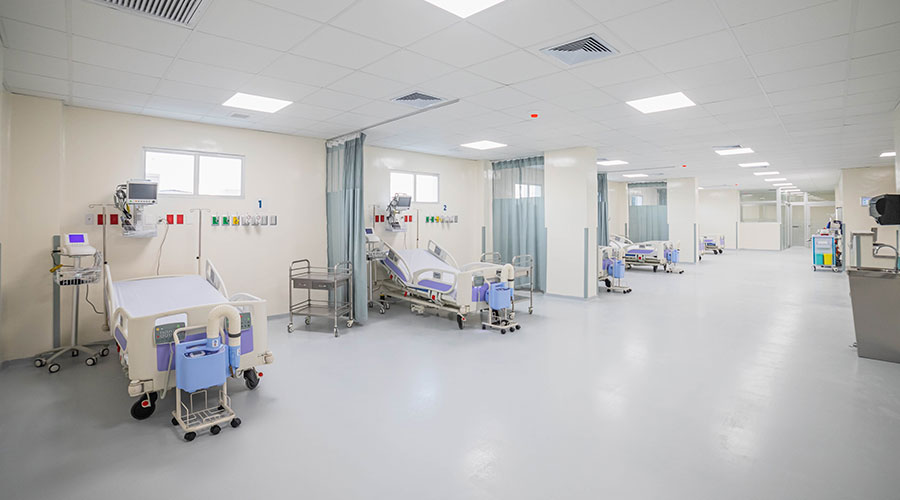Recently, a powerful trend toward “patient engagement” has emerged driving transformation in how healthcare providers deliver services to those most impacted by healthcare decisions: patients. Patient engagement consists of programs, technology, and information that empower patients to adopt active roles in managing their own healthcare journeys.
According to the Journal of Participatory Medicine, “As the number of people all over the world with chronic disease grows significantly, healthcare systems are responding to the call for increased patient engagement. This trend follows suggestions from scientific debates highlighting how patient satisfaction and quality outcomes are improved when patients become actively engaged in their own healthcare.” 1
While this potential revolution in provider/patient relationships is taking place, healthcare IT organizations are facing serious challenges of their own. On the one hand, demand from healthcare leadership for cost efficiency is never ending.
But on the other, technology users—including clinical caregivers—are often highly dissatisfied with their experiences with enterprise technology, finding it far less positive than what they enjoy with consumer technologies. Sadly for IT, it’s also a triple threat as governmental regulatory compliance and organizational security standards continue to bring enormous pressure to bear.
IT is caught squarely between rising user expectations and its own, often out-dated, technologies that can’t simply be ripped out and replaced due to cost, compliance, and security concerns.
What would happen if IT were to learn from clinical healthcare’s pursuit of “patient engagement” by creating its own “user engagement” strategies? What would the benefits of doing so be? And what would it take to make it happen? We’ll take a brief look at patient engagement methods and trends, and then apply them to the challenges facing IT. After all, patients have more interest in their own healthcare than anyone else. Consumerization trends suggest the same could be true for IT users and their technology experiences.
Patient engagement simplified
The concept of patient engagement is simple: give the patient tools that will make it easy for him or her to make good decisions and stay healthy. This means:
• Pushing information to the patient proactively based on his or her unique medical history and needs
• Delivering access to self-service portals with relevant, patient-specific information
• Providing patients with secure and compliant access to health management tools
In a well-structured engagement environment, patients can take the real victory for patient engagement is the discovery that patient engagement is linked to healthier patient habits and proactive action from patients who need care.“When patients are engaged and involved in their care, they tend to be healthier, more compliant with physician instructions and consume fewer healthcare resources in the long run. “Engaging patients in their care will bend the cost curve and improve outcomes.” 2
A parallel for IT: User engagement
For years, healthcare IT has focused on meeting regulatory compliance demands, dealing with legacy infrastructures, managing costs and addressing data security concerns. But IT is often far behind the technology curve when it comes to satisfying its user population’s demands for more information and resources. If, with the right information and tools, patients can make decisions and perform many actions that were once the exclusive responsibility of healthcare workers, shouldn’t IT be able to apply some of these same principles to its own technology users?
Indeed, if the benefits of patient engagement could be mirrored with IT users, the outcomes should be improved user satisfaction, enhanced security and compliance, and reduced IT delivery costs. To make these benefits happen, many of the lessons learned from patient engagement are directly applicable to IT and its technology users. In a nutshell: understand everything you can— in real time—about your users and target your communications and services to them based on their identities, interests, locations and contexts.
Just like patients, user conditions and interests change daily; what is appropriate and engaging one day may be unimportant the next. Consider an expectant mother who delivers a healthy baby. One day she is interested in receiving information on late-stage pregnancy and birth, the next day she has deep interest in infant care information and resources.
Now, consider an employee who is undergoing a role change. For example: a finance administrator who is focused on an organization’s merger and acquisition activity may not require an expensive license for customer relationship management software (CRM), but when that employee moves into the sales department as a sales operations administrator, the CRM license becomes relevant immediately.
Likewise, when that employee leaves the organization, that license should be returned to the pool immediately to save costs. The technology exists today to determine what resources an individual employee should need based on his or her role.
This concept is called proactive service automation. IT should be able to use each employee’s role information (as captured in the human resources identity system) to pinpoint the need for a software license and automatically provision that license as soon as a role change takes effect. When an employee leaves the company, that same license — along with any other IT resources —should automatically be returned.
Automatic provisioning should be realistic for up to 80% of each individual employees’ technology needs, including applications, data access and access to other unique devices that are prevalent across healthcare facilities. But what about the remaining 20% — those “unpredictable” requests such as requesting access to a new cloud service or access to a medical system that is not typical protocol?
To derive maximum benefit from a user engagement solution, self-service resources should also be available. But rather than offer very user a complete menu of every possible option — leading to confusion at best and over-consumption at worst — self-service resources should be targeted to the user. For example, users should be able to choose access to a marketing automation tool if they are in marketing, but not if they're in research and development.
This approach of targeting and customization has already proven itself successful across patient engagement initiatives. According to the national learning Consortium, "a patient portal that mostly provides administrative functions, such as scheduling appointments and getting lab results, will not be as interesting or useful to patients. Patients will be more likely to use a portal that is designed and configured to address their personal interests and needs." 3
The case for context awareness
For patients
People can only consume so much information, but they can consume that information in different ways in order for it to be most effective. In healthcare, an organization has a vast number of individual variables to consider for its patients:
• Age
• Gender
• Ethnicity
• Language
• Technology access
• Medical conditions
• Drug regimen
• Physical/cognitive limitations
• And many, many others
For example, if a patient were just given access to a web portal with documentation on every condition known to medical science, along with advanced tutorials on chemistry and biology, how engaged could they be if overwhelmed with information, much of it irrelevant?
Likewise, if a patient suffering from diabetes is an 80 year old who speaks only Spanish and uses only a simple text-enabled phone, providing that patient with lengthy information about the dangers of smoking in English via email is pretty much useless. However, sending a daily short text message in Spanish about controlling diabetes may be extremely useful, and it would certainly meet the patient’s needs in a much more effective way.
Instead of pushing inappropriate and irrelevant data to them, an understanding of the patient’s particular needs and abilities can be used to determine how to deliver the most appropriate information in the most suitable way. Looking at key trends among patient populations—for example mobile device use—gives healthcare providers the opportunity to deliver relevant information to patients in the best format possible.
For IT users
To make a similar technology access scenario possible for users, IT must understand, react to and even predict what their users want based on each user’s immediate context.
IT users are heavy technology consumers, using several devices per day—including device types that are unique to healthcare clinicians. One study reports that doctors are “digital omnivores,” with 47 percent of them using smartphone, tablet and PC devices.4 And the services and experience each user receives is partly based on the device they are using at the time the service is needed.
On top of that, healthcare clinicians are always on the go and their physical locations are critical to determining the services they need. When they send information to print from a patient’s room, they don’t want that print job to go to their office in another wing— especially if it contains confidential patient information and they don’t know who may be standing at the printer. Clinicians and other healthcare employees have access to extremely sensitive patient data and applications. The user location has a great impact on how information should be handled—and even what information should be available to them.
IT services are proven to be more effective when they are based on context; that is, when they are delivered based on an understanding of who is requesting the service and—ideally—the time of day, location and device being used as the service is being requested.
Should a clinician be able to access iTunes while working in a patient care area? For many healthcare organizations, that application should be deprovisioned, at least while the clinician is working in the care area (to improve clinician job satisfaction, it can be automatically reprovisioned when the clinician goes to the cafeteria for lunch).
Should he or she be able to access sensitive patient information from a laptop while connected to the internet at a public coffee shop? For security reasons, perhaps a better solution is to automatically deprovision access to patient information from unsecure locations — as well as from devices that are not recognized as company issued.
IT services that are not context-sensitive can lead to confusion and risk, as well as undermining the advantages that user engagement strategies are meant to gain. And there are proven technologies available that provide highly sophisticated context awareness capabilities, spanning both access rules and self-service.
Now, more than ever, there are significant security risks associated with healthcare. Providing data, applications, drive mappings, and other services based on a detailed understanding of user context not only make for a better user experience, but also improves security by eliminating access to applications and sensitive data when the environment demands it.
Benefits of a user engagement strategy
The benefits of a well-executed user engagement strategy are powerful.
• Engaged users will be satisfied users with higher IT satisfaction scores on company surveys
• Risks of security breaches will be reduced with automatic decommissioning of users and user roles changes, as well as much more granular access rules for sensitive data
• IT processes will become greatly streamlined through automation and self service, which greatly reduces costs
While patient engagement will greatly improve the efficient use of limited resources, it will simultaneously improve the quality of the patient experience. And that patient experience is being measured more precisely than ever before, with the scores achieved in patient satisfaction surveys now impacting the financial reimbursements that healthcare providers receive.
For IT, a comparable exercise would be to consider how IT departments would fare if their relative budgets were impacted by up to 4 percent based on user engagement scores.
Just as the healthcare industry aims to provide quality services to patients, the goal of IT is to provide users with every tool and service they need to accomplish their jobs.
By engaging users, IT can empower them to be more productive and efficient. By having services automatically delivered based on context and additional services available on-demand, users have a better experience. Everyone wins.
Summary
Engagement strategies are powerful forces. They liberate the desire of the user (or patient) to be in control of his or her resources so he or she can access the resources when and how they want them. In the same sense that retail outlets no longer wait for their customers to come to them, healthcare has learned that by proactively engaging patients when they are well, the chances are that their patients will remain healthier, happier, and will give higher satisfaction ratings.
The same holds true for user engagement.
IT’s steps toward a user engagement strategy are clear:
• Implement context aware technology so you can deliver the right services at the right time with each user’s full context—location, device and time of day — used to automatically determine the services that should be available to them
• Use your systems’ knowledge of users’ roles and responsibilities to deliver IT services to them proactively
• Manage application usage actively by subscribing and unsubscribing users from application licenses automatically, as user roles change. These same policies can also be applied to other IT services to improve the overall user experience.
• Leverage self-service and service automation to reduce significant volumes of service desk tickets and their related costs
With each step towards a user engagement strategy, you will leverage critical lessons learned from patient engagement research and study to improve technology use from hospital staff. These same steps aimed at improving user satisfaction are also creating a more secure and effective IT environment. It’s a win-win for all.
Stacy Leidwinger is vice president of product marketing at RES Software.
1“The Challenges of Conceptualizing Patient Engagement in Health Care: A Lexographic Literature Review,” Serena Barello, et.al. June 11, 2014, Journal of Participatory Medicine.
2 “The Challenges of Conceptualizing Patient Engagement in Health Care: A Lexographic Literature Review,” Serena Barello, et.al. June 11, 2014, Journal of Participatory Medicine
3 "How to Optimize Patient Portals for Patient Engagement and Meet Meaningful Use Requirements," May 2013, National Learning Consortium.
4 “47% of Doctors use Smartphone, Tablet and PC,” Ken Terry, InformationWeek, August 14, 2013.
Read article with full graphics.

 Designing Hospitals for Wellness
Designing Hospitals for Wellness Baptist Health Announces New Cancer Care Center in Key West
Baptist Health Announces New Cancer Care Center in Key West Waco Family Medicine Achieves Savings and Bold Design with Wood Selections
Waco Family Medicine Achieves Savings and Bold Design with Wood Selections Alleged Ransomware Administrator Extradited from South Korea
Alleged Ransomware Administrator Extradited from South Korea Design Plans Unveiled for New Intermountain St. Vincent Regional Hospital
Design Plans Unveiled for New Intermountain St. Vincent Regional Hospital